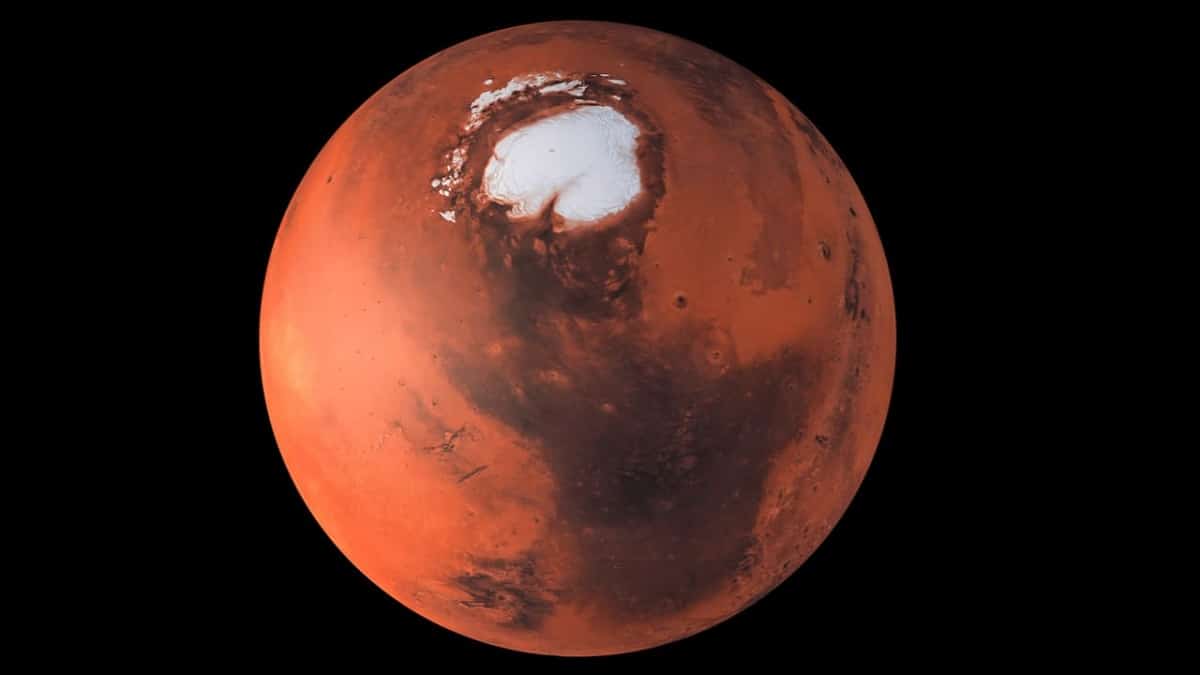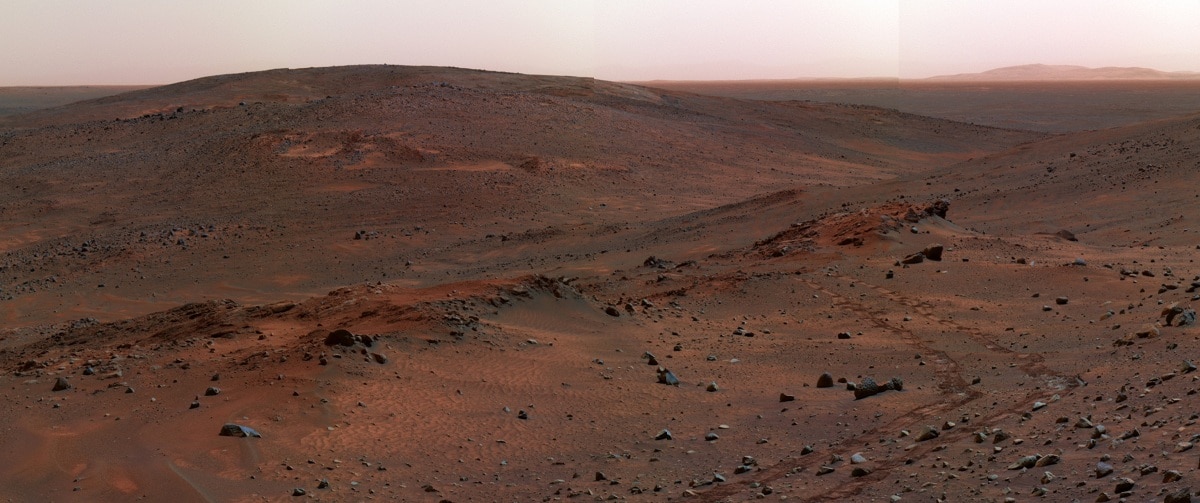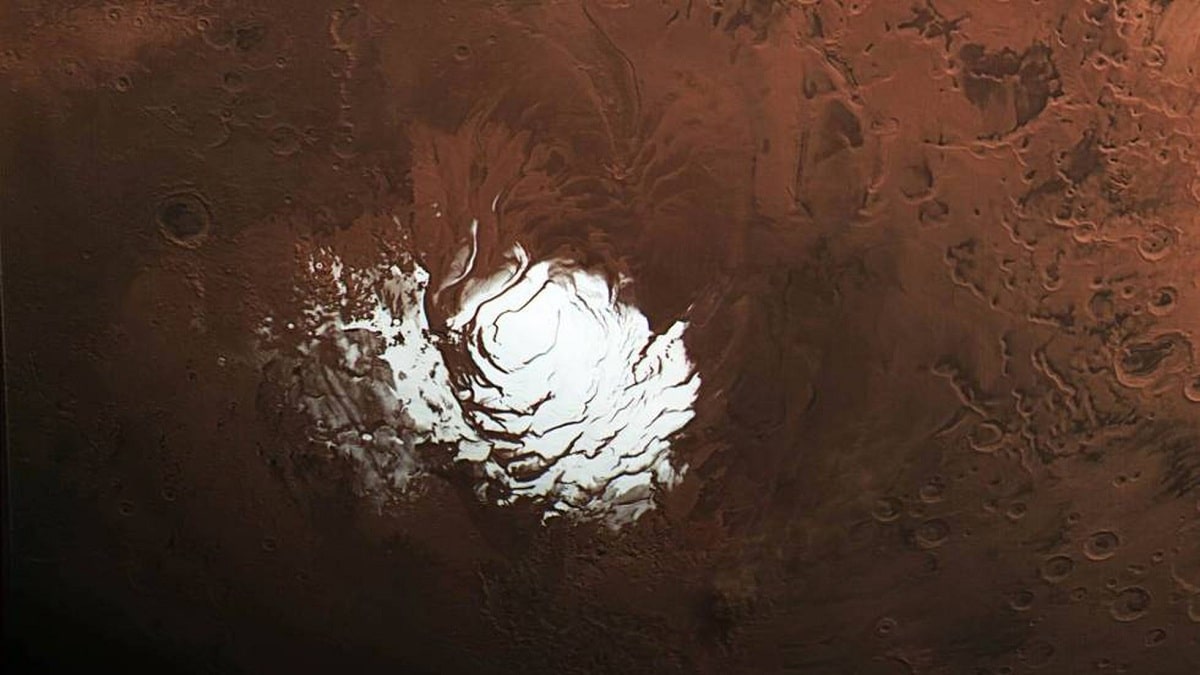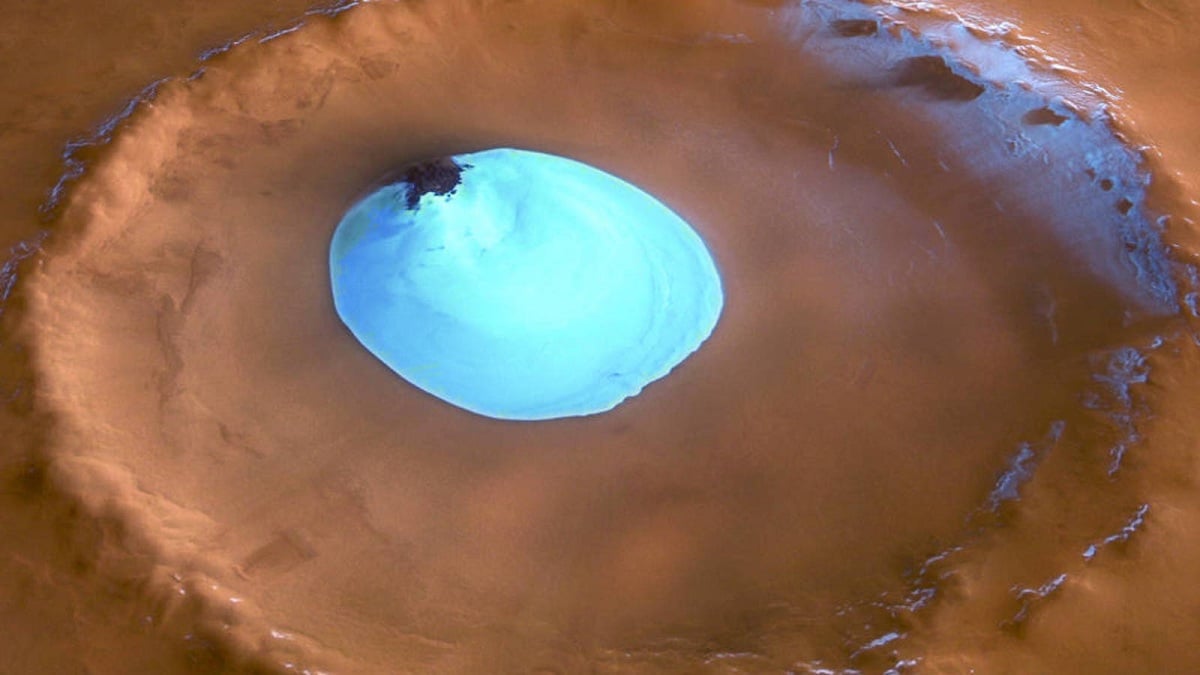
For quite some time, it has been known that Mars has water inside it. What is not known is how much water it can actually have. As we know, Mars is NASA's target and is being studied thoroughly. New data has been revealed on water on mars related to the subsoil of the south pole. Dozens of underground lakes appear to be found in this area.
In this article we are going to tell you everything that is currently known about water on Mars.
The South Pole and water on Mars

So far, we know that the underground surface of Mars contains deposits of water ice and carbon dioxide frozen in places, called dry ice. These sediments are in different layers, which allows us to better record the history of Mars. For example, allow us to determine how certain regions of Mars were cooler in the past to allow for this freezing.
A new study by NASA revealed more details about these underground deposits. They are not sure if these signs are liquid water, but they appear to be much broader than those found in the original documents. The agency used the MARSIS instrument on the European Space Agency's Mars Express orbiter. With this radar instrument, researchers can send waves to the surface of Mars. Based on the reflected waves it receives, they can determine what is below the surface. For example, ice is easily reflected in radar waveswhile components such as the earth itself are easily penetrated and hardly reflected.
The latest investigation has revealed dozens of reflection points at the south pole. The area covered by these points is much larger than originally thought. But the most interesting thing is that in many places the frozen water is less than two kilometers deep.
What does this tell us? We need to do more research in that area of Mars. These discoveries can iInspire a new on-site mission to the South Pole on Mars. The rover at the South Pole of Mars can help us better understand the behavior of water in the region and how useful it is for humans in the future.
Research on water on Mars

Today, Mars is a frozen desert. But dry deltas and banks show that in the past, water flowed across the surface of this red planet. For decades, scientists have been trying to figure out where the water is on Mars, hoping to understand how the red planet became a dry wasteland, while its neighbor, Earth, saved water resources and became a biological paradise.
Now, by introducing observations of this planet into a new model, a team of geologists and atmospheric scientists has produced a new picture of the past of Mars: most of the water contained on this planet may be trapped in the Earth's crust.
Previous studies have shown that when solar radiation draws water on Mars from the atmosphere, most of the water on Mars escapes into space. But this new study concludes that the water on Mars has suffered both an atmospheric leakage and a geological capture. Depending on the amount of water with which it starts, the new model estimates that between 30% and 99% is integrated in minerals from the earth's crustwhile the rest escapes into space. This is a wide range and is likely to involve two processes, so the reality is within this range.
If the new model is accurate, the history of adolescence on Earth will have to be rewritten. It is believed that all the water trapped in the crust of Mars today means that at its young age, there was much more water on the surface of Mars than previous models estimated, and that ancient times may be more auspicious than is known previously thought of microbial life. The thin atmosphere of Mars prevents the presence of liquid water on the surface of the red planet. But the water could remain liquid underground.
White grooves

There is evidence that there is salty water on Mars, and this fluid is the cause of the linear grooves found on the slopes of craters during the hottest season on Mars. What's more, liquid water below the surface provides a more suitable environment for life on this planet. The results revealed evidence of hydrated salt in up to four different locations. Therefore, the so-called slender linear trench, which is about 5 meters wide and has been studied for many years, is due to the activity of salt water.
Mysterious linear currents appear every Martian summer that seem to move down the mid-latitude slopes of the southern hemisphere. When the cold arrives, these linear currents or furrows disappear. The fact that the data now confirm that these furrows are not maintained throughout the year indicates that liquid water is flowing down hills and slopes due to increased temperatures. When the cold season arrives they disappear.
Thanks to spectrometric data from CRISM, a team of scientists from the Georgia Institute of Technology (USA) has confirmed the presence of hydrated salts such as perchlorates and chlorates, which are very abundant on this planet (up to 10.000 times more than Earth). So what lower the freezing point of water from 0ºC to -70ºC, circumstance by which it is possible to find liquid water.
Conditions for life
Even with everything discovered, the surface of the red planet has environmental conditions quite hostile to life. Especially, these conditions are established by the amount of ultraviolet radiation that comes from the sun. However, these data on the possible existence of liquid water in the underground part make habitability much more favorable under the Martian regolith, which is where efforts must be concentrated to search for life in the future.
I hope that with this information you can learn more about the water on Mars and everything that is known about it.